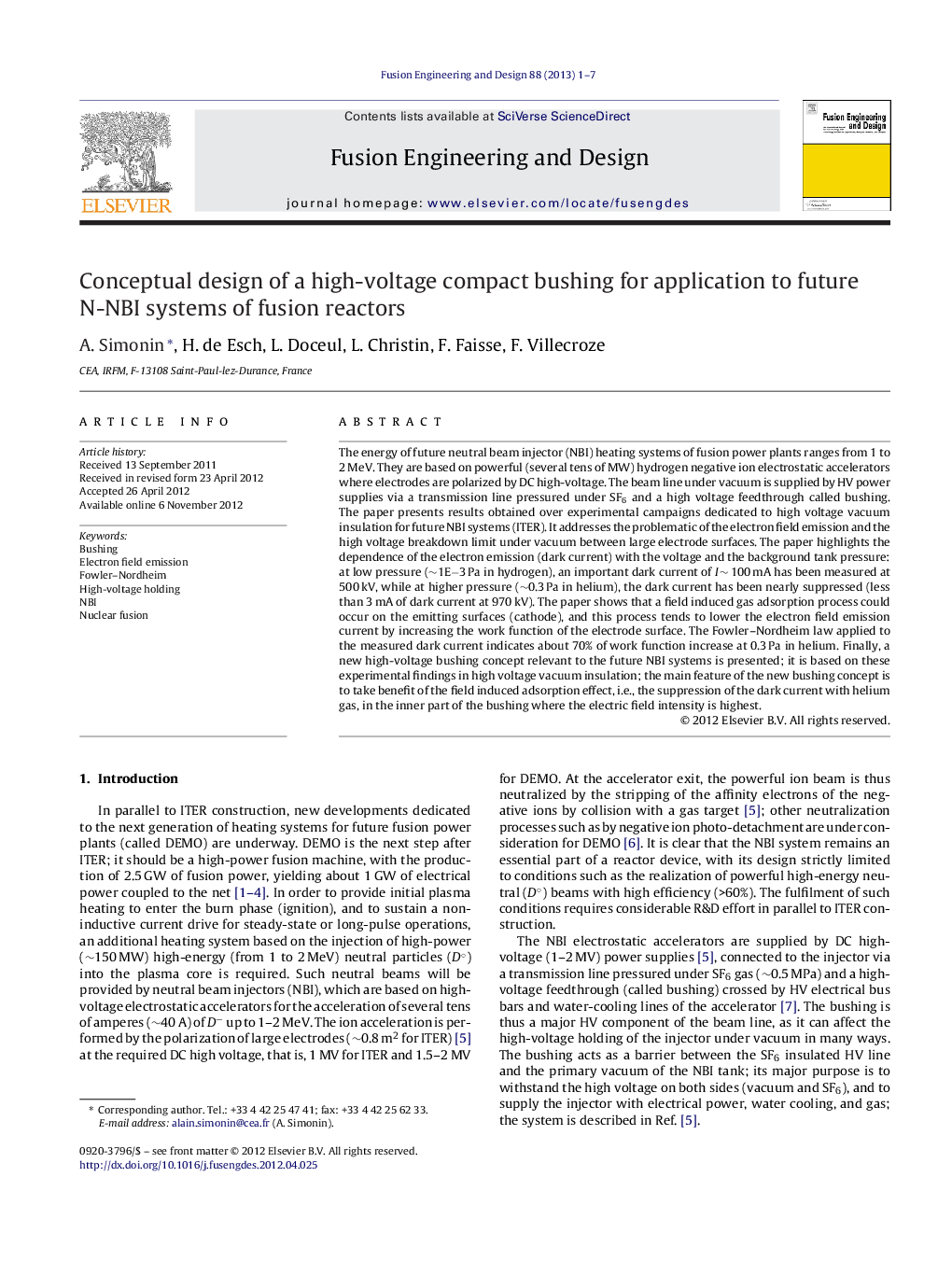| Article ID | Journal | Published Year | Pages | File Type |
|---|---|---|---|---|
| 272111 | Fusion Engineering and Design | 2013 | 7 Pages |
The energy of future neutral beam injector (NBI) heating systems of fusion power plants ranges from 1 to 2 MeV. They are based on powerful (several tens of MW) hydrogen negative ion electrostatic accelerators where electrodes are polarized by DC high-voltage. The beam line under vacuum is supplied by HV power supplies via a transmission line pressured under SF6 and a high voltage feedthrough called bushing. The paper presents results obtained over experimental campaigns dedicated to high voltage vacuum insulation for future NBI systems (ITER). It addresses the problematic of the electron field emission and the high voltage breakdown limit under vacuum between large electrode surfaces. The paper highlights the dependence of the electron emission (dark current) with the voltage and the background tank pressure: at low pressure (∼1E−3 Pa in hydrogen), an important dark current of I ∼ 100 mA has been measured at 500 kV, while at higher pressure (∼0.3 Pa in helium), the dark current has been nearly suppressed (less than 3 mA of dark current at 970 kV). The paper shows that a field induced gas adsorption process could occur on the emitting surfaces (cathode), and this process tends to lower the electron field emission current by increasing the work function of the electrode surface. The Fowler–Nordheim law applied to the measured dark current indicates about 70% of work function increase at 0.3 Pa in helium. Finally, a new high-voltage bushing concept relevant to the future NBI systems is presented; it is based on these experimental findings in high voltage vacuum insulation; the main feature of the new bushing concept is to take benefit of the field induced adsorption effect, i.e., the suppression of the dark current with helium gas, in the inner part of the bushing where the electric field intensity is highest.
► Electron Field Emission occurs between large electrodes under vacuum (100 mA of e− at 450 kV). ► An Helium filling pressure of 30 mPa suppresses electron emission up to 950 kV. ► Electron suppression results from a field induced adsorption process which increases the metal work function. ► This process increases the atom binding energy in the nearby of the micro-tips. ► A new 1 MV Bushing concept based on this process is proposed.
